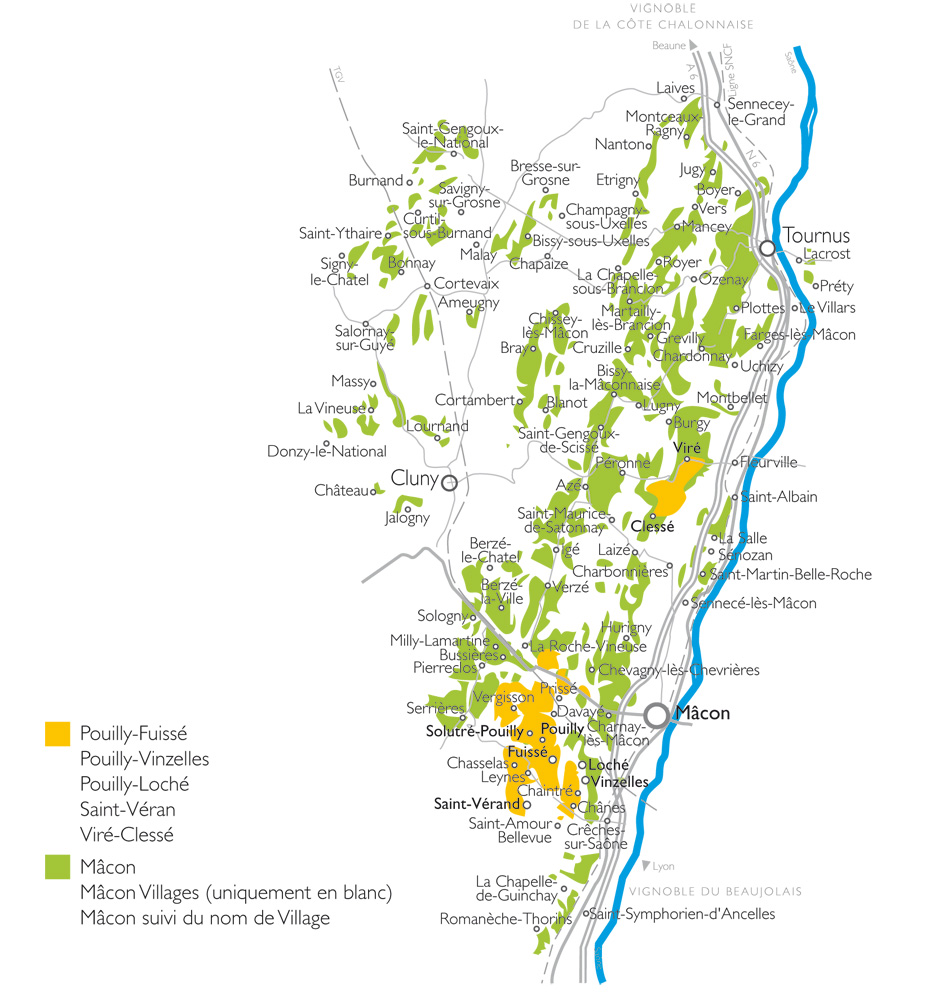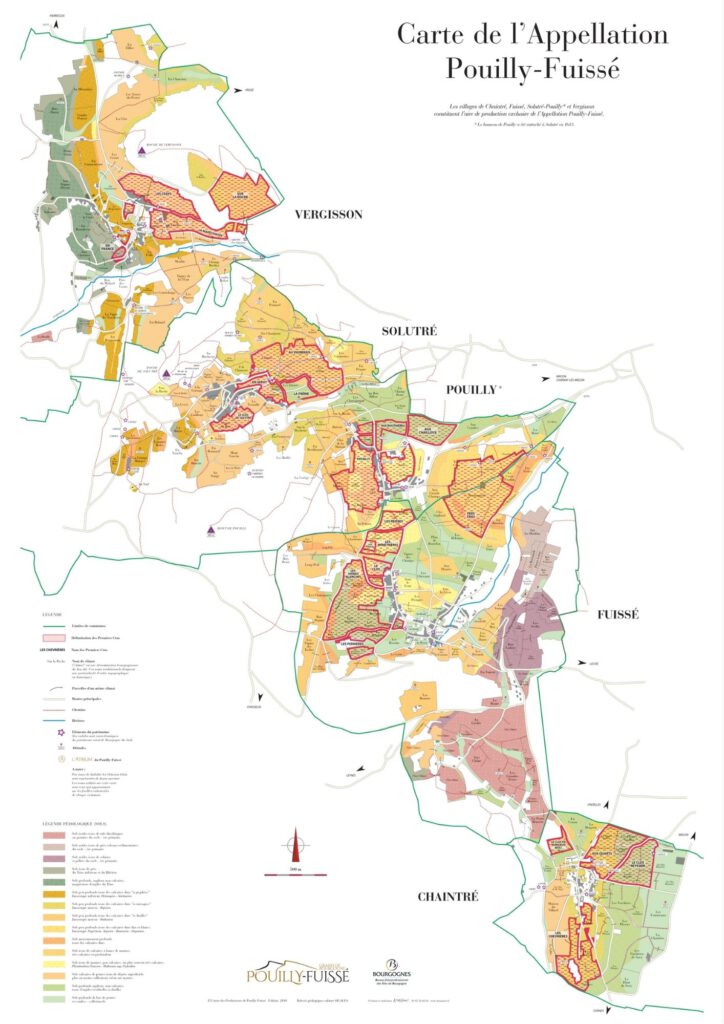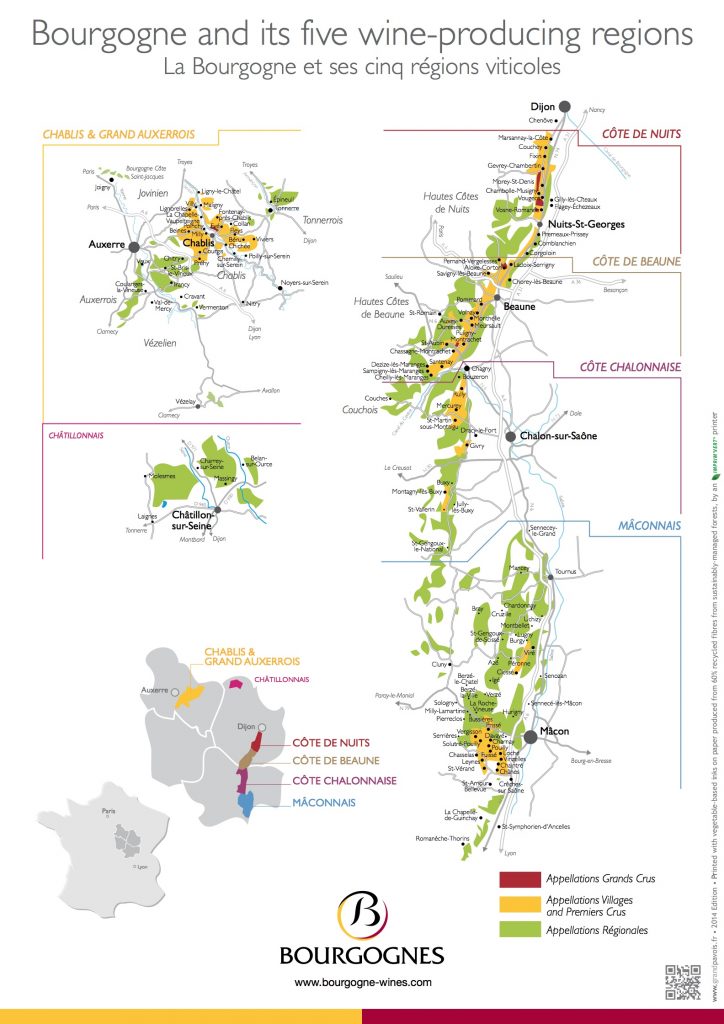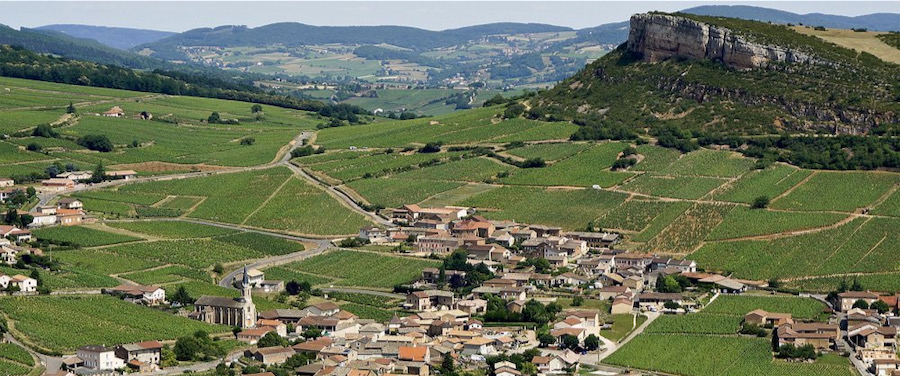Burgundy is home to some of the world’s greatest Pinot Noir and Chardonnay + a splash of Aligoté.
In our Getting Your Head Around Burgundy, we’re exploring the main villages of Burgundy, its viticulture, winemaking, classifcation systems, and, of course, Burgundy’s wines.
Part 12 explores the Mâcconais, the southern-most wine producing region of Burgundy. Its climate and geography vary considerably from the Côte de Nuits and Côte de Beaune, often producing wines with more weight and body.
Make sure you join our community to get the latest articles from the Wine Bites Mag as they come out. You’ll find all of our Burgundy related articles here.
There’s a quick refresher on the regions of Burgundy at the end of this post to help you place yourself within Burgundy and France as a whole.
See all of our wines from Mâcon
The Villages of the Mâconnais
The Mâconnais is the soul of southern Burgundy, extending over some 40 km of the Côte Chalonnaise as far as the Rock of Solutré. The vines occupy a landscape of little hills and valleys, and are bordered on one side by the river Saône and the Grosne on the other. Vines were first planted here in Gallo-Roman times and were fostered in the Middle Ages by the powerful abbeys of Tournus and Cluny.
We’ve seen acquisitions in Mâcon from Domains including Meusault’s Comte Lafon, both an acknowledgment of the quality potential of the region and the cost of expansion in the Côte d’Or. The world has become increasingly aware of what many savvy French have known for a long time, there is some serious tasty vino and affordable vino coming out of the Mâcon.
Today the Mâconnais represents the biggest winegrowing area in Burgundy and is home to the Mâcon AOC, which covers 4224 ha. Established in in 1937, this regional appellation is divided into now four levels, which correspond to production under different sites, regulations and of varying quality levels.
The first level covers wines that bear the Mâcon appellation and are produced across the entire area. They can include white, red and rose wines. The second level is the Mâcon Villages appellation, which is reserved for white wines produced in a more restricted areas. The third level corresponds to the highest level of regional appellations, and covers white, red and rose wines from a limited area within the Mâcon – approximately half the AOC. For these wines, the label must include the name of one of 27 specific villages or geographical denominations.
In a demonstration of just how good the wines of Mâcon are, after a 10-year application process, the French National Institute of Origin and Quality (INAO) approved the classification making Pouilly-Fuissé the first appellation within Burgundy’s Mâconnais sub-region to benefit from premier cru vineyards.
The 22 new premier crus represent a total of 194ha under vine, accounting for roughly 24% of Pouilly-Fuissé’s total vineyard area (800ha). The newly-classified vineyards are spread over four communes of the appellation that only produce white wine from Chardonnay: Chaintré, Fuissé, Solutré-Pouilly and Vergisson. The new status begins with the 2020 vintage.
It is the first time since 1943 that a premier cru level is newly recognised in a Burgundian appellation.
There are undoubtedly other sites worthy of Premier Cru status, Viré-Clessé will surely push for their best sites to be upgraded too!
To learn about these geographical denominations in more detail, watch the video below.
Separated by a series of parallel faults, the hills of the Mâconnais are linked along axes which give them either a North/North-westerly or a South/South-easterly exposure. Here, the limey soils produce fruit for elegant Pinot Noirs and age worthy Chardonnays. Elsewhere, flinty sands and clays, often mixed sandstone pebbles yield more youthful, early-drinking wines from Chardonnay or Gamay, which is equally at home on granitic soils that signal the nearby presence of the Beaujolais.
This video provides an overview of the geography and geology of the Mâconnais as explained by Jean-Pierre Renard.
Get your head around the different Mâcon villages and the general Mâcon appellation + geographical denominations with Charles Lamboley
See Mâcon through the eyes of local winemakers Théo et Paul Merlin.
Detailed Map of the Mâconnais
The region of Mâcon

Pouilly-Fuissé including new Premier Cru’s

The 22 new premier crus, commune by commune:
Chaintré:
- Le Clos de Monsieur Noly
- Les Chevrières
- Aux Quarts
- Le Clos Reyssier
Fuissé:
- Le Clos
- Les Brulés
- Les Ménétrières
- Les Reisses
- Les Vignes Blanches
- Les Perrières
- Vers Cras
Solutré-Pouilly:
- La Frérie
- Le Clos de Solutré
- Au Vignerais
- En Servy
- Aux Bouthières
- Aux Chailloux
- Pouilly
- Vers Cras
Vergisson:
- Les Crays
- La Maréchaude
- Sur la Roche
- En France
The Regions of Burgundy
The best bit of Burgundy is a thin strip running from North to South around 50km in length, to the South East of Paris
It’s split into three main regions, within each of these regions there are villages which have specific single vineyards planted in them to the varieties red varieties: Pinot Noir and Gamay, and the white varieties: Chardonnay and Aligoté, a lesser variety that produces some fun wines at more affordable prices.
The three main regions in the strip South of Dijon are:
- Côte D’Or – meaning the Golden Slope, derived from it’s original name, Côte d’Orient, East Slope, within which rest:
- Côte-de-Nuits – South of the city of Dijon and North of the town of Beaune famous for it’s Pinot Noir. The best known villages are: Gevrey-Chambertin, Morey-St-Denis, Chambolle-Musigny, Nuits-St-Georges and Vosne-Romanée. 5% of Burgundy production including Chablis.
- Côte-du-Beaune – The area around and South of Beaune famous for Chardonnay including the 5 Grand Cru vineyards and many very good Pinot producing vineyards. The best known villages are: Puligny-Montrachet, Chassagne-Montrachet, Mersault, Volnay, Pommard and Saint Aubin. 10% of production including Chablis.
- Côte-Chalonaise – Mixing more affordable Chardonnay and Pinot that can be of excellent quality. The villages of Rully, Mercurey and Givry producing their best wines.
- Mâconnaise – The least regarded of the main regions, still capable of producing some very good wines. Becoming a shining light for value with the ever increasing prices of Burgundy.
In addition to these, the two regions of Beaujolais, mostly producing Gamay, (at the South end of the Dijon Strip) and Chablis, mostly producing Chardonnay (between the southern part of Champagne and Dijon) are part of the Bourgogne wine region.


You must be logged in to post a comment.